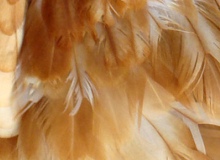Chicken feathers used to help in oil spill mitigation

Researchers in the Department of Chemical Engineering at the University of Delaware have developed a method to mitigate oil spills using chicken feather fibers.
Prof. Richard Wool has discovered that when the fibers are cut to an optimal size, surface tension forces drive them to form self-assembled percolating networks that attract and trap oil spilled on a water surface.
Preliminary tests have yielded promising results, and a provisional patent application has been filed on the technology.
The US poultry industry generates 5-6 bln pounds of feathers annually, an amount that Wool says could handle an oil spill covering some 200,000 sq. miles, or the entire economic zone of the Gulf of Mexico.
“The fibers are not attracted to the water,” Wool says, “but they are attracted to the oil, just as they are on live birds. And once a network of oil-soaked fibers is formed, it will reassemble, or restructure, even if it’s temporarily broken up by wind or wave action.”
Although reports of feather use for oil spill remediation exist, the UD researchers have discovered how to maximise the self assembly of the oil-soaked feathers for absorption efficiency and effective subsequent removal. They have also discovered that the size of the fibers is critical – too long and the fibers will fail to assemble; too short and they won’t assemble correctly.
Preliminary experiments have been conducted to improve the science at the laboratory level, and Wool plans to conduct further tests at an ocean spill simulator in New Jersey.
Source: University of Deleware













